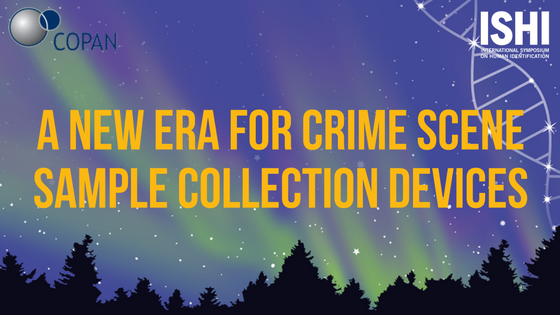As the field of forensic science continues to progress, an important part of this advancement still depends and should depend on sampling collection procedures, which are fundamental to successful analysis of DNA evidence. The need to deploy better performing and more robust evidence examination tools is undoubtedly a major focus; but there should be considerations on some aspects, both of technical and financial in nature, which government agencies must assess before adoption into daily routine. In addition, practical training and education on how to properly collect, preserve and maximize DNA recovery from forensic samples plays a pivotal role towards adopting new methodologies for crime scene processing.
Submitted by: Copan Flock Technologies
Regardless of the manner one chooses to address the needs of the forensic community, there are some shared interests or common points all forensic experts agree upon when dealing in the pre-analytical process of a crime scene investigation.
One of the most challenging tasks of evidence collection is to maintain and safeguard the integrity of the scene upon arrival. Minimizing contamination, either internal or external, is considered one of the most important activities which if not properly monitored and controlled could impact negatively on the overall quality of the trace material collected.
Moreover, effective, efficient, and consistent sample collection from polluted less than ideal crime scene environment must be addressed. Along with such demands, the amount of sample that can be recovered from the swab may become a limiting factor from obtaining the best results possible and devices and procedures should strive to yield the greatest amount of DNA possible with sufficient purity to be compatible with downstream results.
In that vein, low yield absorption and release of state-of-the art collection devices must be developed by current forensic suppliers. Last but not least, the possibility for forensic investigators to re-test a remaining part of a sample, upon request which may occur after a considerable amount of time is another compelling component or comprehensively investigating best practices in an unbiased fashion.
Being in the forefront of clinical sample collection and preservation for the past 40 years, Copan understands well that the same focus and values should be given to forensic practices prior to analytical phase. The experiences that will be presented and discussed by an international panel of speakers during the Copan Vendor Showcase on Tuesday, September 27th from 5:30 – 7:30pm, will have the objective to scientifically address the aforementioned challenges.
WOULD YOU LIKE TO SEE MORE ARTICLES LIKE THIS? SUBSCRIBE TO THE ISHI BLOG BELOW!


